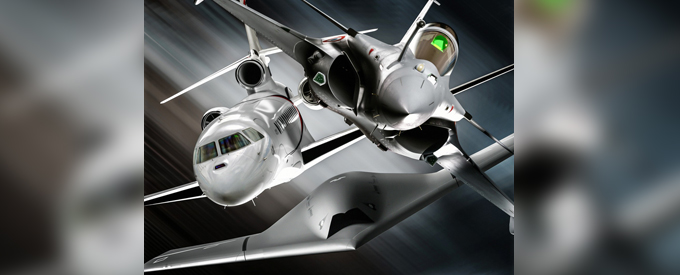2020-01-07
The nEUROn: Europe’s Stealth Platform
The European combat aircraft industry will face three main challenges over the next 20 years. Firstly, to uphold necessary skills in areas in which the European industry has gained technical competences and fields of excellence. Secondly, the need to develop strategic technologies and lastly, to provide a workload to the European design offices.
In 2003, the French government responded to this challenge by launching a project for a technological demonstrator of an Unmanned Combat Air Vehicle (UCAV), elaborated in the framework of a European cooperation scheme. The prime contractor was notified of the main contract in 2006, with the industrial partnership contracts following concurrently.
History of Testing
The first flight of the technological demonstrator named nEUROn was completed on 1st December 2012 in Istres, France. Following initial flights, the nEUROn was transferred to the research centre of the French defence procurement agency (DGA – Délégation Générale pour l’Armement) in Bruz to evaluate stealth performance.
Taking place in an anechoic chamber, the campaign lasted until May 2013 giving excellent results. The nEUROn was displayed at the Paris Air Show in June 2013 where it attracted a lot of interest.
In summer 2013, the nEUROn returned to Istres for the French test campaign. In the initial phase, the purpose tests were designed to open up the aircraft’s flight envelope (including with weapon-bay doors open), test the electro-optical sensor and evaluate datalink performance.
In the second phase, most of the flights were dedicated to signature/detection tests in the infrared and electromagnetic ranges using operational systems. Now nEUROn has proven to be the first large size stealth platform designed in Europe.
The 100th sortie was recorded on 26th Feb 2015 before the nEUROn was transferred to Italy in spring 2015 and to Sweden in summer 2015 in order to be exposed to operational systems deployed by these two major programme partners. A test launch of a 250kg bomb from the internal bay was successfully carried out on 2nd September 2015 in Sweden.
Dassault Aviation Partnership
During all these test campaigns, Dassault Aviation’s operation of the nEUROn proved the outstanding availability and reliability of the aircraft, achieving all the anticipated results and enabling the lessons learnt from the stealth data to constitute a reference for future aircraft projects. Dassault’s success demonstrates its aviation competences in both strategic technologies and prime contractorship, as well as its capacity to lead cooperative European programmes.
In May 2016, the DGA launched a new nEUROn flight test campaign in France to study the use of an unmanned combat air vehicle in a naval context. Tests were carried out at sea with the Charles de Gaulle aircraft carrier, then followed by another campaign of electromagnetic signature measurements at the DGA’s Bruz centre lasting until early 2017.
The aim of the demonstrator was to provide the European design offices with a project permitting them to develop know-how and maintain their technological capabilities over the coming years. It was also a way of implementing an innovative process in terms of the management and organisation of a European cooperative programme.
A single point of decision, the DGA and a single point of implementation, the Dassault Aviation company as prime contractor, were settled to manage the nEUROn programme. In completing these objectives, the project has gone far beyond the theoretical studies by building and demonstrating an unmanned aircraft.
Since then, the Italian, Swedish, Spanish, Greek and Swiss governments have acted together with their related industrial teams to join the French initiative.
Related Industrial Team
The industrial team of the nEUROn programme is composed of six companies outlined here:
Dassault Aviation (France): Additional to being the design authority, Dassault took charge of the general architecture of the system, the flight control system, the implementation of low observable devices, the final assembly, the systems integration on the “global integration tests rig”, the ground tests and the flight tests.
Leonardo (Italy): Leonardo contributed to the project with a new concept of an internal weapon bay (“Smart Integrated Weapon Bay” – SIWB), an internal EO/IR sensor, the bay doors and their operating mechanisms, the electrical power and distribution system, and the air data system.
Saab (Sweden): Saab was entrusted with the general design of the main fuselage, the landing gear doors, the avionics and the fuel system.
Airbus Defence & Space (Spain): Formerly EADS-CASA, Airbus Defence & Space lent its experience to the wings, the ground station and to the data link integration.
Hellenic Aerospace Industry – HAI (Greece): HAI was responsible for the rear fuselage, the exhaust pipe and the supply of racks for the “global integration tests rig”.
Ruag (Switzerland): Ruag took care of the low-speed wind tunnel tests and the weapon interfaces between the aircraft and armaments.
The nEUROn programme aims to demonstrate the maturity and effectiveness of technical solutions. The aircraft’s composite structure as well as its high level of stealth are the main technological challenges successfully met by Dassault Aviation as part of this programme.


No Comments